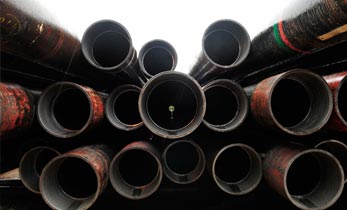Tanzania’s natural gas could heat Uganda’s crude oil pipeline
Uganda is considering tapping into Tanzania’s huge natural gas potential for heating the East African Crude Oil Pipeline (EACOP) from Hoima to Tanga.
tapping into Tanzania’s huge natural gas potential for heating the East African Crude Oil Pipeline (EACOP) from Hoima to Tanga.
The crude oil discovered in Uganda is said to be waxy with low sulphur making it difficult to flow through the pipeline without constant warmth heated above 65 degrees Celsius.
The USD 3.55 billion pipeline will be the longest electrically heated pipeline in the world. While the two governments and the lead investor have in the past been considering using electricity or diverting some of the crude oil for heating the pipeline, a new option of constructing a pipeline for transporting gas from Tanzania is under discussion.
Also Read:10 Tried and True Tactics For Generating More Leads and Sales In Tanzania
Tanzania has 57 trillion cubic feet (tcf) of undeveloped and proven natural gas reserves that can be turned into Liquefied Natural Gas (LNG). It is emerging that resource can be used by Uganda to enable the flow of the crude oil from Hoima to Tanga and as well be used to develop Uganda’s iron ore.
The latest development was revealed by the Uganda National Oil Company (UNOC) General Manager, John Bosco Habumugisha, one of the panel discussants at the Second Annual Africa Energy Forum in Kampala.
He said the key issue is whether Uganda can find an alternative that is cheaper to have the pipeline heated for the entire 1,445km journey running from Hoima to Tanga Port in Tanzania, at the Indian Ocean.
The construction of the pipeline is being spearheaded by Total E&P Uganda, a subsidiary of French oil giant, Total S.A, on behalf of the joint venture partners Tullow and CNOOC.
Habumugisha in an interview said the two countries and the joint venture partners have to agree on the principles over the possibility of another pipeline for gas from Tanzania before they the can move into a studies phase that could evaluate what size of the pipeline, how much gas could be required and where would the pipeline pass.
He revealed that those processes are still in early stages between the two states to agree on the principles before they could proceed to the feasibility studies stage.
Uganda has on recent confirmed 500 billion cubic feet (tcf) of natural gas but Habumugisha says that is not a big amount of gas to sustain operations of the East African Crude Oil Pipeline over the envisaged 25 year period.
He explained that it cannot even be enough for the development of Uganda’s steel industry because the steel industry equally requires adequate supply over a long period d of time. Part of Uganda’s 500 billion cubic feet (tcf) will be used to develop oil fields within Uganda because they equally need electricity to run.
President Yoweri Museveni and his Tanzanian Counterpart, John Pombe Magufuli at a Masaka State lodge meeting late last year hinted on the need for the two to utilize their rich natural resources to propel development on either side.
Asked about the likely cost of the two countries implementing to big projects, Habumugisha said the crude oil pipeline is being developed as a regionally available infrastructure and that provisions have been made for third party access for countries like Rwanda, DRC and South Sudan.
Energy and Mineral Development Minister, Engineer Irene Muloni in December held a bilateral meeting with a delegation from Democratic Republic of Congo over the East African Crude Oil Pipeline.
Jean-Lu Bruggeman, the Total E&P Uganda’s Project Director for East African Crude Oil Pipeline said there is still a challenge to finding a cost-effective means of heating the pipeline given the waxy nature of Uganda’s oil.
Bruggeman was however hesitant to discuss the new Tanzanian natural gas pipeline option coming in as part of the solution. As the two governments discuss the matter, some officials at the Ministry of Energy have in the past weighed down the option of burning crude oil to heat the East African Crude oil Pipeline. The cheapest option so far available is the electricity option where connections would lay along the pipeline.
Progress of the pipeline
The Crude Oil Pipeline is according to the Energy Ministry is progressing well as Uganda and Tanzania begin the fast-track mode towards completing before 2020 when first oil is expected.
Jean-Lu Bruggeman revealed that Front-End Engineering Designs (FEED), for the pipeline was completed and handed over to the government in December 2017.
Gulf Interstate Engineering Company last year awarded a 36-billion dollar job by Total Exploration & Production Uganda (TEPU) and its partners, China National Offshore Oil Corporation (CNOOC) and Tullow Oil, to carry out front-end engineering and design (FEED).
John Bosco Habumugisha confirmed that Front End Engineering Designs were received and that there is an optimization study going on in Uganda and Tanzania to follow up on the FEED studies.
He says optimization is important to ensure that best economics is obtained for the project and to ensure that the best standards are followed. The optimization study is expected to be completed by the end of this month. A financial analysis is expected to be conducted at the end of the optimization study financing purposes.



